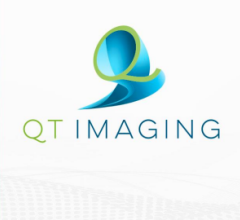It’s been a busy year in women’s health, and the topic of breast density remains on the forefront. To date, 21 states have enacted the breast density inform law, which requires healthcare providers to inform women if they have dense breast tissue. Several other states have also either endorsed the bill, or are currently working on it.
During the recent 25th Annual Interdisciplinary Breast Center Conference (NCoBC 2015) in Las Vegas, sponsored by the National Consortium of Breast Centers (NCBC), I sat down with NCBC President Gary Levine, M.D., to discuss some of the trends and advancements that have taken place this past year.
“A lot of the efforts have been generated by the breast density legislation that is happening throughout the United States,” said Levine. “States are enacting legislation that dictates that the radiologist must inform a woman regarding her breast density. We see this as very valuable in that women should be informed. However, we need to develop protocols and put them in place for how to address this.”
Levine stated that much of this advancement has to do with the new technologies being developed. “Traditional screening mammography, 2-D mammography, has shown that it can decrease the mortality from breast cancer up to 40 percent, but there is a subset of women with dense breast tissue in whom 2-D mammography has limitations. It has trouble seeing through that dense breast tissue in order to see the cancer, so these women need to be aware of that, and we need to offer them supplemental screening technologies,” he explained.
Currently, several methods are available, and several are under development. The most common is 3-D mammography, or digital tomosynthesis, which allows the radiologist to slice through the breast tissue and find the cancer that might otherwise be hidden behind dense breast tissue. Screening the breast with ultrasound is another technology, and is unaffected by breast density which makes it a good supplement to screening with mammography.
“There also are other technologies being introduced and developed, including breast-specific gamma imaging, which is a type of nuclear imaging, CT of the breast, and CAT scans specific for breast imaging,” said Levine. “It is a very exciting time and we hope to be able to improve the screening that we are offering this subset of women.”
However, the ongoing issue remains insurance coverage. “We as physicians are primarily concerned with diagnosing breast cancer early, because we know that translates into survival, but the reality is that if the finances don’t make sense it’s impossible to offer that technology, and hospitals throughout the country are struggling with this,” Levine stressed. “With tomosynthesis, the technology is available and we know that it can find up to 40 percent more invasive cancers in these women with dense breasts, but it has to be paid for. One positive development is that this year Medicare has started a new CPT code, and it has agreed to start paying for digital tomosynthesis. Many of the other third-party payers are dragging their feet, so we are hoping that they follow Medicare’s lead and will start paying for this new valuable technology.” A new code also is in place for whole breast ultrasound screening, and for the first time, providers can get paid for that technology. Most certainly, ITN will keep you abreast of new developments in this area as they develop.
You can watch my interview with Levine, as well as other leading physicians speaking on the topic of women’s health, on ITN’s video channel.


 December 16, 2025
December 16, 2025 








